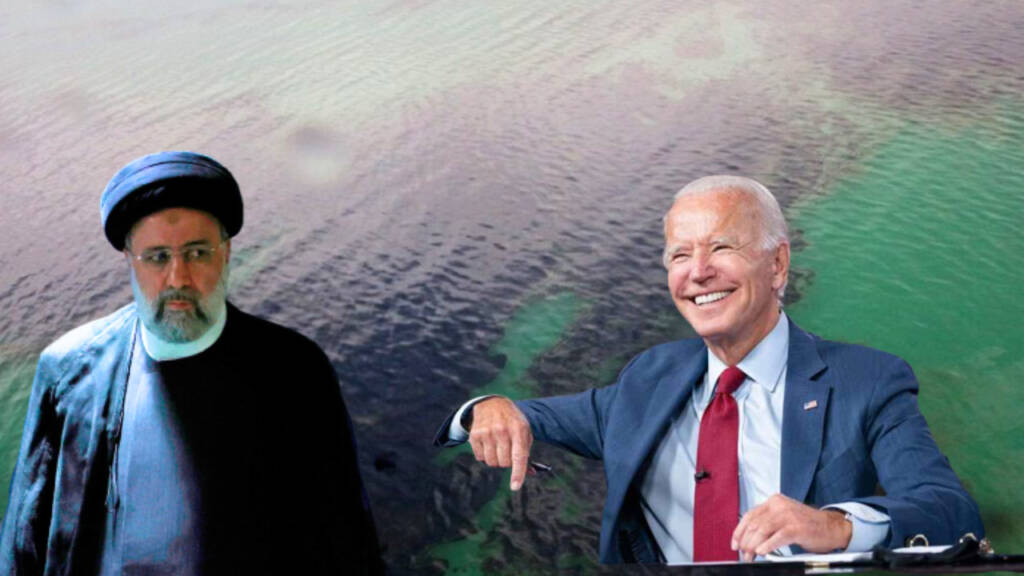The ongoing conflict between the United States and Iran is entering a fresh phase of heightened tension. An unusual oil spill within Iran has emerged as a distinctive occurrence, visibly affecting the country’s energy output in the Persian Gulf.
A significant oil leakage has been identified in a vital transmission pipeline that links Iran’s strategic Kharg Island, situated to the south, with the key mainland port of Genaveh.
The Tasnim news agency reported on 27th August that two ships have been deployed to the shores of Kharg and Genaveh to manage the cleanup process and minimize potential adverse effects on the environment and economy.
In order to avert the discharge of oil onto the seafloor from the pipelines, teams of divers have been mobilized, as stated by an authority from Bushehr province.
Remarkably, this marks the first instance in which Iranian officials have identified a leak in an uncommon manner on Kharg Island, which is rigorously secured owing to Tehran’s vested interests.
The strategic significance of Kharg Island to Iran is underscored by its role as the primary terminal for the nation’s oil exports.
Iran’s Oil Leak Hampers Ambitions
Nestled in the midst of the Persian Gulf, it functions as a pivotal nexus for shipping and dispatching Iran’s substantial reservoirs of oil.
Dominance over the island is indispensable for upholding Iran’s economic equilibrium and global energy market sway, cementing its role in the oil-centric economy.
These unforeseen leaks have taken Iranian authorities by surprise, potentially disrupting a substantial portion of oil extraction and export operations.
The situation has compelled Iran to pause its oil activities, affecting recent expansion initiatives in the Persian Gulf.
In recent months, Iran has actively increased its oil extraction, evident through the installation of platforms at Balal and Abouzar fields. As part of these efforts, Iran intends to drill eight production wells from the new platform, with a projected output of 500 MMcf/d.
The Iranian Offshore Engineering and Construction Company (IOEC) is overseeing topside construction, while the Iran Marine Industrial Company (SADRA) is also taking part in construction efforts.
IOEC is also tasked with installing the accompanying export pipelines, underscoring the multifaceted nature of these expansion endeavors.
Expected for completion by mid-March 2024, the comprehensive project will initiate drilling upon finishing. A prototype well has been drilled to inform subsequent designs.
Read More: A $6Bn Surrender Story: Biden Bows to Iran Again
Return to Market Delayed
This makes it very obvious that Iran aims to enhance its oil exports after prolonged disruptions post the 2018 US sanctions following the withdrawal from the JCPOA by former President Donald Trump.
Iran’s reintegration into the oil market, long-discussed, has now commenced, although the US shows discontent with these advancements.
Iran’s growing influence in the Middle East, exemplified by its recent overtures towards re-engaging with Saudi Arabia and potential GCC membership, has heightened US concerns over its regional position.
Read More: “Locked and Loaded” Iran’s Top-Secret Missile Plan is Now Out in the Open
The US-Iran Escalates
Whereas, Iran’s explicit message to the United States, urging a complete exit from the Middle East, has escalated tensions. With periodic warnings to vacate the region, Iran and the US find themselves in a new Cold War-like standoff.
To counter Iran, the United States, while maintaining its presence in the Strait of Hormuz and the Persian Gulf, initiated the seizure of Iranian oil vessels in the Strait of Hormuz.
This move incited military responses from Tehran. However, Iran’s subsequent capture of unauthorized US oil tankers, caught the US off guard, prompting more escalation.
Consequently, the US bolstered its naval and maritime deployment in the Persian Gulf and the Strait of Hormuz.
Read More: Its Official: Biden is waving white flag against Iran
US’ Handiwork
Recently, the US escalated its presence by deploying two additional naval vessels, armed with weaponry and a contingent of 3000 personnel, aimed at safeguarding American interests and reinforcing the Fifth Fleet’s influence in the region.
This power struggle has transformed these strategically significant areas into unprecedented battlegrounds.
The recent unexplained oil leak has fueled suspicions of US involvement, given Iran’s silence. With the US concerned about Iran’s resurgent role in the oil market, it’s quite absurd to think that Iran would compromise its pipelines during a crucial export expansion.
Read More: A down and out US is willing to make every concession to appease Iran
Iran’s ascent as an oil powerhouse emerges as a formidable threat to US dominance. And so, this leak at Iran’s Kharg Island appears as nothing less than the dramatic handiwork of the US, a strategic maneuver to thwart Iran’s rising influence.
The question of whether it’s the work of the US or not remains unanswered, yet make no mistake, Tehran will be surely gearing up to swiftly respond to the presence of the US in the near future.
Watch More:
